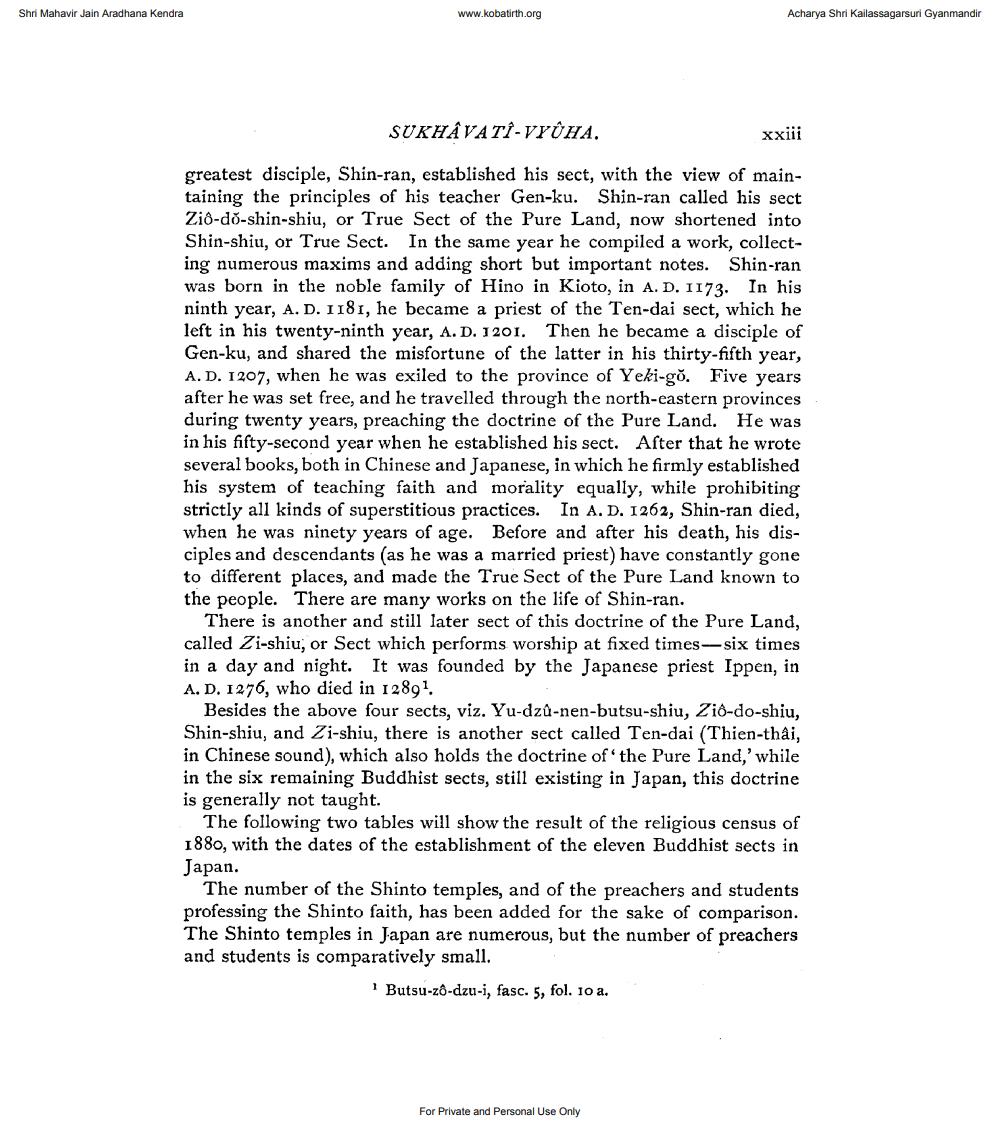________________
Shri Mahavir Jain Aradhana Kendra
www.kobatirth.org
Acharya Shri Kailassagarsuri Gyanmandir
SUKHAVATI-VYUHA,
xxiii
greatest disciple, Shin-ran, established his sect, with the view of maintaining the principles of his teacher Gen-ku. Shin-ran called his sect Ziô-do-shin-shiu, or True Sect of the Pure Land, now shortened into Shin-shiu, or True Sect. In the same year he compiled a work, collecting numerous maxims and adding short but important notes. Shin-ran was born in the noble family of Hino in Kioto, in A. D. 1173. In his ninth year, A. D. 1181, he became a priest of the Ten-dai sect, which he left in his twenty-ninth year, A. D. 1201. Then he became a disciple of Gen-ku, and shared the misfortune of the latter in his thirty-fifth year, A. D. 1207, when he was exiled to the province of Yeki-go. Five years after he was set free, and he travelled through the north-eastern provinces during twenty years, preaching the doctrine of the Pure Land. He was in his fifty-second year when he established his sect. After that he wrote several books, both in Chinese and Japanese, in which he firmly established his system of teaching faith and morality equally, while prohibiting strictly all kinds of superstitious practices. In A. D. 1262, Shin-ran died, when he was ninety years of age. Before and after his death, his disciples and descendants (as he was a married priest) have constantly gone to different places, and made the True Sect of the Pure Land known to the people. There are many works on the life of Shin-ran.
There is another and still later sect of this doctrine of the Pure Land, called Zi-shiu, or Sect which performs worship at fixed times-six times in a day and night. It was founded by the Japanese priest Ippen, in A. D. 1276, who died in 12891.
Besides the above four sects, viz. Yu-dzû-nen-butsu-shiu, Ziô-do-shiu, Shin-shiu, and Zi-shiu, there is another sect called Ten-dai (Thien-thâi, in Chinese sound), which also holds the doctrine of the Pure Land,' while in the six remaining Buddhist sects, still existing in Japan, this doctrine is generally not taught.
The following two tables will show the result of the religious census of 1880, with the dates of the establishment of the eleven Buddhist sects in Japan.
The number of the Shinto temples, and of the preachers and students professing the Shinto faith, has been added for the sake of comparison. The Shinto temples in Japan are numerous, but the number of preachers and students is comparatively small.
1 Butsu-zô-dzu-i, fasc. 5, fol. 10 a.
For Private and Personal Use Only




